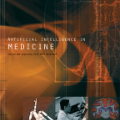We describe the architecture of Sammen Om Demens (SOD), an application for portable devices aiming at helping persons with dementia when wandering and getting lost through the involvement of caregivers, family members, and ordinary citizens who volunteer. To enable the real-time detection of a person with dementia that has lost orientation, we transfer location data at high frequency from a frontend on the smartphone of a person with dementia to a backend system. The backend system must be able to cope with the high throughput data and carry out possibly heavy computations for the detection of anomalous behavior via artificial intelligence techniques. This sets certain performance and architectural requirements on the design of the backend. In the paper, we discuss our design and implementation choices for the backend of SOD that involve microservices and serverless services to achieve efficiency and scalability. We give evidence of the achieved goals by deploying the SOD backend on a public cloud and measuring the performance on simulated load tests.
翻译:我们描述Sammen Om Demens(SOD)的架构,这是一个便携式装置的应用程序,旨在帮助痴呆者在照顾者、家庭成员和自愿者普通公民参与下游荡和迷路时帮助痴呆者。为了能够实时检测失去定向的痴呆者,我们将高频定位数据从痴呆者智能手机的前端转移到后端系统。后端系统必须能够应对高过量数据,并进行可能的沉重计算,以便通过人工智能技术检测异常行为。这为后端的设计设定了某些性能和建筑要求。我们在该文件中讨论我们为SOD的后端所作的设计和实施选择,其中涉及微服务和服务器上的无服务器服务,以实现效率和可缩缩性。我们通过在公共云上部署 SOD后端和测量模拟负荷测试的性能,来证明已实现目标。




